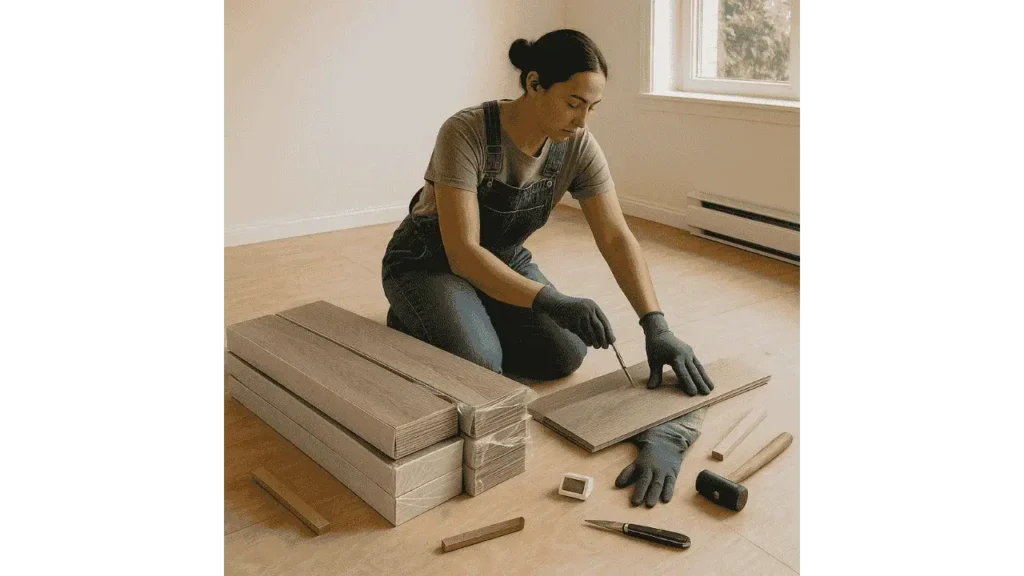Proper acclimation of vinyl plank flooring is more than just a technical formality, it’s one of the most important steps in achieving a stable, long-lasting floor. When flooring isn’t properly acclimated to the room’s environment, it can expand, contract, or warp after installation. I’ve installed vinyl flooring in homes across varying climates, and I can confirm: the floors that last longest are always the ones properly acclimated before day one.

Why Acclimation Is Important?
Vinyl plank flooring is sensitive to its environment. Changes in temperature and humidity can cause it to expand or shrink, especially if it goes from a cold warehouse to a warm, humid room. Letting the flooring sit and adjust to the space allows it to stabilize before being locked in place.
According to flooring expert Joanna Wells,
“Skipping the acclimation process is one of the most common causes of post-installation issues like buckling or separation.”
Taking this step seriously saves future frustration.
Steps to Acclimate Vinyl Plank Flooring
Step 1: Check Manufacturer Guidelines
Every flooring brand is a bit different. Start by reviewing the manufacturer’s instructions for acclimation time and environmental requirements. Some may recommend longer or shorter durations depending on material composition.
Step 2: Prepare the Installation Area
The room where the flooring will be installed must be climate-ready. That means the HVAC should be running as it would normally during occupancy. Ideal conditions are typically between 65–85°F and 35–70% humidity. Make sure windows are closed and the room stays consistent.
Step 3: Leave Flooring in Original Packaging
Keep the planks in their original packaging while they acclimate. This packaging shields them from sudden exposure while still allowing them to slowly adjust to the room. Lay the boxes flat and avoid stacking too many on top of each other to promote even air circulation.
Read More: What Is the Best Vinyl Flooring Thickness?
Step 4: Allow for Proper Acclimation Time
Most manufacturers recommend at least 24 to 48 hours for acclimation. In homes with significant climate variation or if flooring was stored in a cold location, give it extra time. Waiting even an extra day can make a big difference.
Step 5: Monitor Room Conditions
Use a hygrometer to check humidity levels, and a standard room thermometer to track temperature. Sudden changes in climate during acclimation can undo progress. Avoid turning off heating or cooling systems, and don’t open windows or doors unnecessarily.
Step 6: Inspect the Flooring Before Installation
Once acclimation is complete, inspect the planks. Check for any signs of warping, bowing, or surface damage. If anything looks off, don’t install it, reach out to the supplier instead.
Common Mistakes to Avoid
Even experienced DIYers can make critical errors during acclimation. One common mistake is skipping the acclimation process altogether, assuming that vinyl doesn’t require it. Another is placing the flooring near heat vents, windows, or in direct sunlight, which exposes it to sudden temperature changes. Some installers also make the error of storing planks upright or stacking boxes too high, which prevents even airflow and can lead to warping. Installing flooring in a room where the temperature or humidity is still fluctuating is another misstep that compromises long-term performance. These conditions can lead to uneven seams, lifting, or gapping that becomes noticeable soon after installation.
Final Takeaways
Acclimating vinyl plank flooring is an easy but critical step for installation success. Stick to the manufacturer’s recommendations, prepare your room properly, and give the planks time to adjust.
By doing this, you reduce the risk of movement after installation and ensure a floor that looks as good years from now as it does on day one. A bit of patience upfront will save you time, money, and effort in the long run, and that’s a trade worth making.
